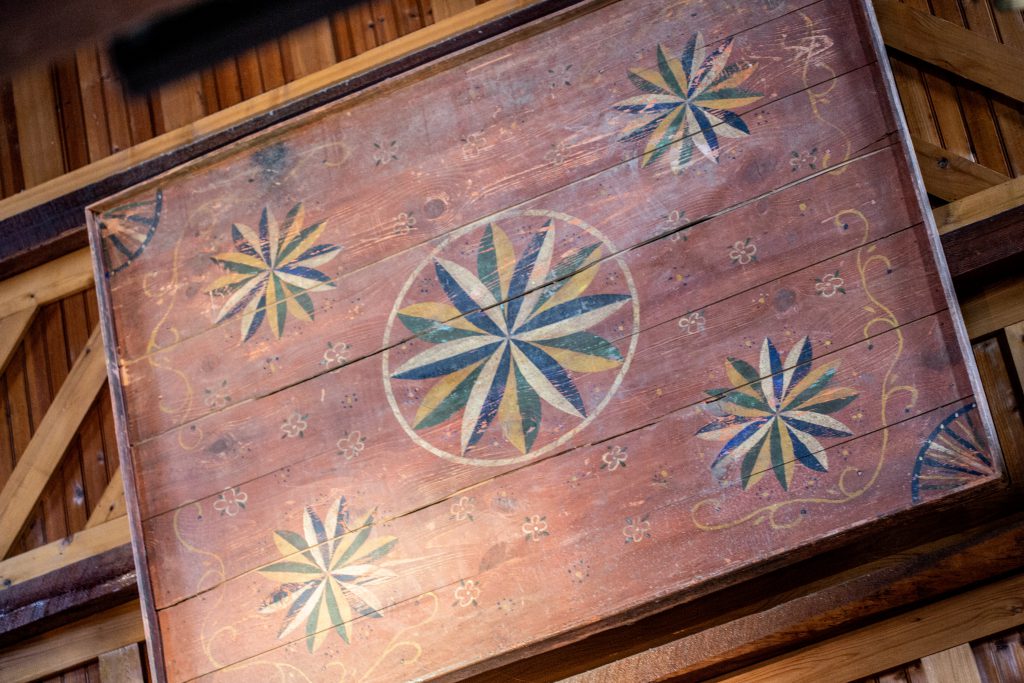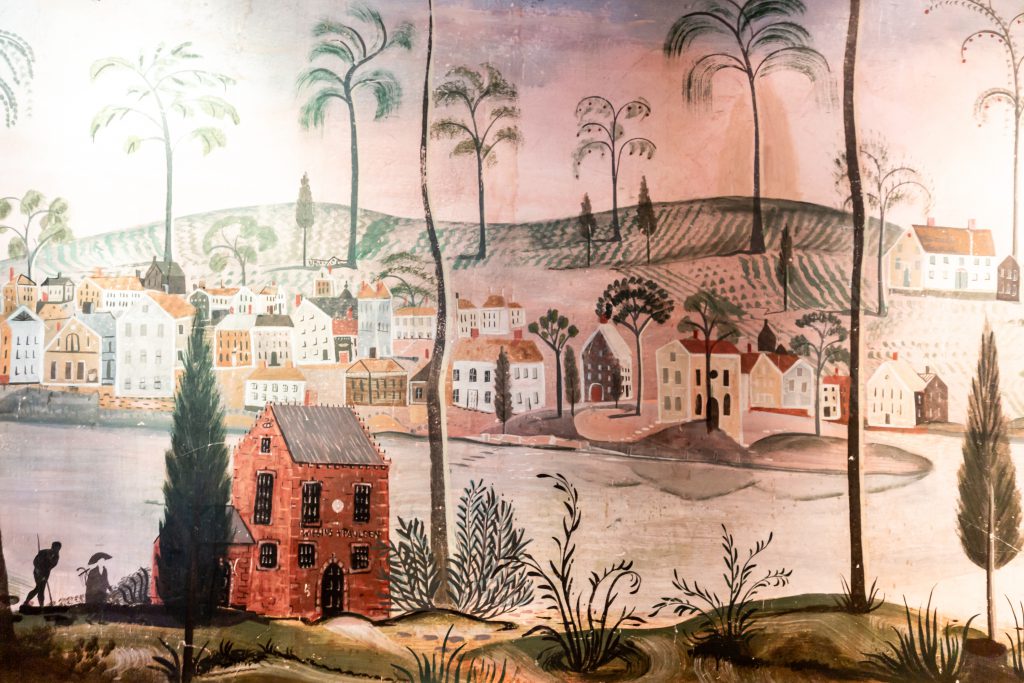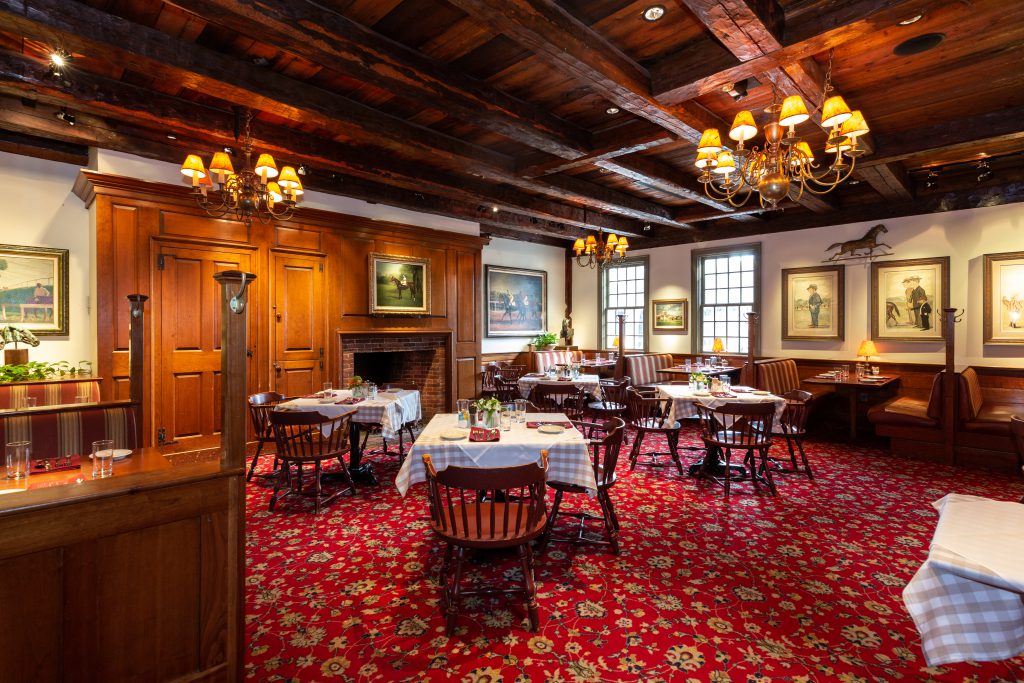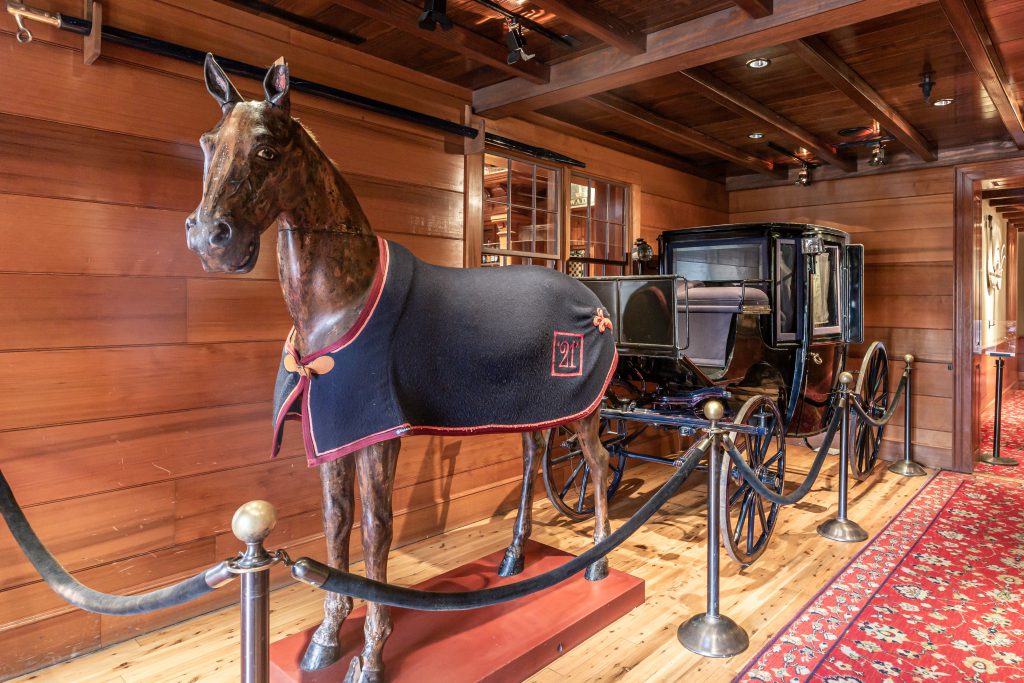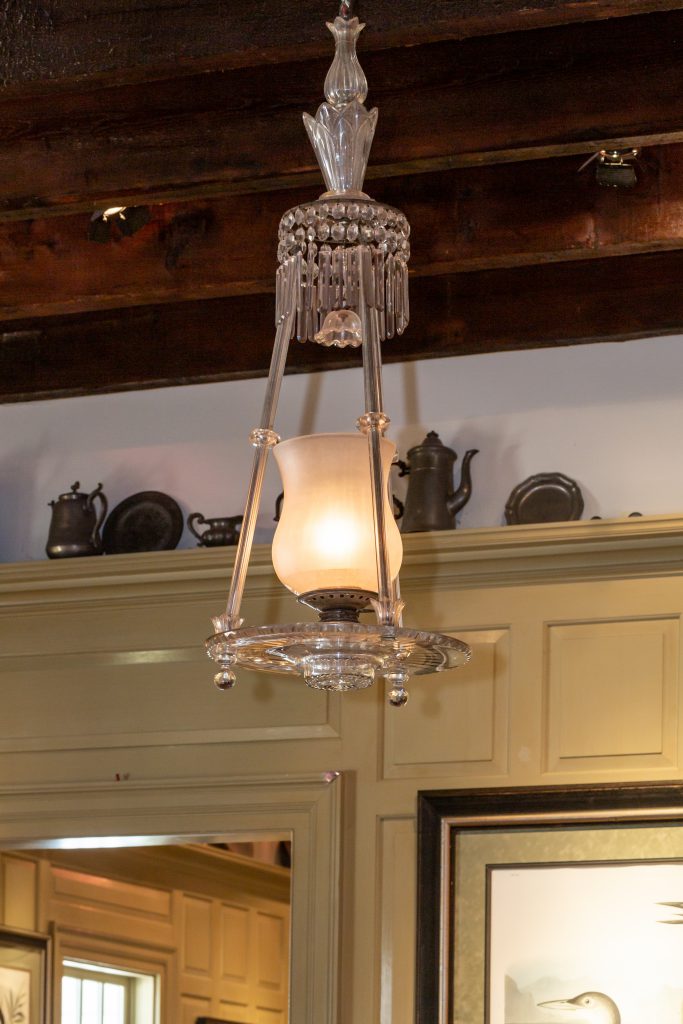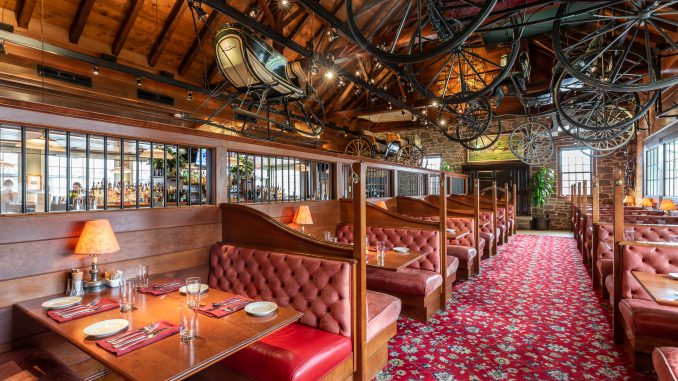
By Chris Wadsworth
Photos by Andrew Sample
Every month, thousands of Ashburn residents pour through the doors of Clyde’s Willow Creek Farm, the area’s original elegant, upscale dining destination. Some head to one of the many dining rooms for lunch or dinner with their families. Others head to any of four bars on the property, where they relax and unwind over wine and whiskey with friends.
In all the repasting and reveling, they often give the unique décor and history of the space little more than a passing glance. Sure, it looks like a quaint old inn. But lots of restaurants have a similar theme in history-rich Northern Virginia.
But it turns out Clyde’s doesn’t just look like a quaint old inn. It is a quaint old inn — from 1807 and transported here from Vermont. And it’s a home, the Roxbury House from 1810. And a barn from 1885.
And so it goes. Four separate historic buildings, saved from the wrecking ball in the 1980s, taken apart and stored for years with great care, then transported hundreds of miles, and reconstructed in the (then) farmlands of Loudoun County. Add in hundreds and hundreds of real antiques collected around the region, plus skilled artists recreating lost traditions, and you have a property that deserves more than that passing glance.
Ashburn Magazine took a tour of Clyde’s Willow Creek Farm with Tom Meyer, president of Clyde’s Restaurant Group, and the longtime history buff shared some amazing secrets with us.
SAMUEL FRENCH TAVERN
As you enter the restaurant through the main front door, you are stepping back in time, into what was once the Samuel French Tavern in Vermont. It was built in 1804 and expanded in 1821. The original structure goes roughly from the hostess stand to the entrance into the main bar and includes the stairway up to several small private party rooms on the second floor.
Much of the woodworking is original to the inn, including the wainscoting on the walls and chair rail trim. In places where materials had been damaged, Clyde’s hired craftsmen to recreate the exact pieces so the eye can’t tell any difference.
“It was really John Laytham,” said Meyer. “He had a passion for preserving these old structures.” Laytham, who passed away in 2019, was one of the co-owners of Clyde’s, having started there as a dishwasher in the 1960s. He helped build the Clyde’s brand into a multimillion-dollar restaurant business and saw the nascent community of Ashburn as the perfect spot for the company’s history-laden new location.
“Here we are in this brand new community, everything is vinyl siding and all these brand new homes, and we just thought people would really enjoy something that felt old and authentic,” Meyer explained.
On the walls of the lobby and other rooms are old-timey murals depicting rural life several hundred years ago. No, these murals aren’t original, but the restaurant hired artists who could paint in a particular style known as “itinerant art.” In the old days, artists would wander the countryside, stopping at homes and taverns and offer to paint in return for some food and a bed for the night. Clyde’s purposely recreated this “itinerant” style on many of the walls in the restaurant.
ROXBURY HOUSE
Right behind the “inn” sits the Roxbury House from 1810, also from Vermont. The long building makes up the two dining rooms as you walk down the long central hallway of Clyde’s. Note the massive timbers that form the skeletons of the rooms. They were cut before the days of powered saws, instead hand hewn with axes and chisels. A fireplace and chimney once stood in the center of the first dining room, and the wooden beams above it are darker, possibly stained by the smoke.
These dining rooms have cabinets on the back wall, painted in a pale, ethereal color. In most cases, this is the original milk paint finish on them. Milk paint is a gentle paint often made of milk and lime with pigments added for color. It has been used for thousands of years. “It was considered fancy in its day,” Meyer said.
CHANDLER BARN
At the rear of Clyde’s, you reach the huge Chandler Barn. Standing outside the entrance is a horse (fake) and carriage (real). The horse once stood at the famed 21 Club in New York City where it was the speakeasy’s mascot. The carriage dates to the pre-automobile era and was bought at an auction in Hershey, Penn.
This innocent diorama is the scene of perhaps the most shocking secret from Clyde’s. On opening night — Dec. 1, 2006 — the restaurant was crowded with diners. Staff members noticed that the carriage, with its curtained windows, was rocking back and forth. When they opened the door, they found two party-goers inside in the middle of — how shall we say this delicately — making “sweet amour.”
Moving on…
The Chandler Barn is a large, two-story tall dining room and private event space. It, too, comes from Vermont and was built around 1885. And indeed, it was used as a barn on a farm — as a place to store hay and feed. If you look up, you’ll see straight to the roof because the boards that once made up the haylofts are gone. But you can see the framework where they stood. You can also see a large L-shaped iron crane mounted near this second floor. It was used to lift hay bales up and down between the ground and the loft.
Note also that the wooden beams in this room are much more cleanly cut — clearly done by steam or water-powered blades at a mill, versus the older rough-hewn ones found in other parts of Willow Creek Farm. (Ironically, the name Willow Creek Farm is the one thing that doesn’t seem to be historic. Meyer doesn’t recall where it came from. Clyde’s sits on land that was once part of the Wortman family’s farm.)
High on the rear wall of the Chandler Barn, over the massive stone fireplace, is a large decorated wooden square — a unique piece of décor to be sure. Turns out this is the top to a child’s antique four-poster bed created by a Pennsylvania Quaker craftsman. Its purpose — to protect sleeping children from water leaking through thatched and other poor quality roofs.
“It makes me happy to think there was some guy 200 years ago spending his life making this stuff,” Meyer said. “I’m sure he didn’t think it would one day be in a restaurant and people would still be admiring his craftsmanship.”
In the bar attached to the Chandler Barn, note the huge 23K gold grasshopper weathervane mounted over the back wall. This commanding creature was created by New England artist Mark Perry and is modeled on a similar one found at Boston’s famous Faneuil Hall. Look closely and you will see the grasshopper’s eyes are old doorknobs.
Time and time again, the details like these — the romantic touches — are right beneath your nose. Or above, as the case may be. In the dining room behind the hostess stand — not a historic structure itself but made to feel like one — note the authentic antique whale oil lamps purchased from a Nantucket family’s home and hung here with great care. They are surrounded by a high shelf loaded with scores of pewter plates and platters more than a hundred years old.
The main bar has a stunning variety of vintage carriages and sleighs hanging from the ceiling. They were purchased at auctions and are meant to evoke the horse country of nearby Middleburg and western Loudoun County. An antique sleigh in front of Clyde’s looks like a sleek 19th century version of a sports car — and has become a popular spot for snapping selfies.
RICHMOND HOUSE
Last by not least, out back, across the patio and past the koi pond sits what many guests simply call the garden bar or the outside bar. But this quaint, little building is actually the oldest structure on the property. It’s called the Richmond House and dates to around 1780 and, yes, it came from here in Virginia, from the Richmond area. It was once a farmhouse and still contains the original wooden beams and paneled wainscot.
“Willow Creek Farm can help make you appreciate when times were slower and things were handmade, help you appreciate the care and craftsmanship that went into building these structures,” Meyer said. “You feel a sense of warmth. There’s a sense of respite. The word “restaurant” comes from “restore.” You come in and relax.”

